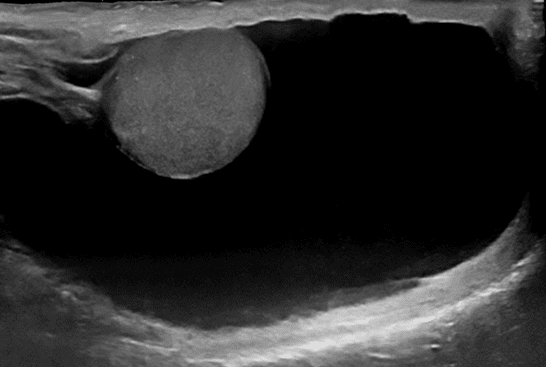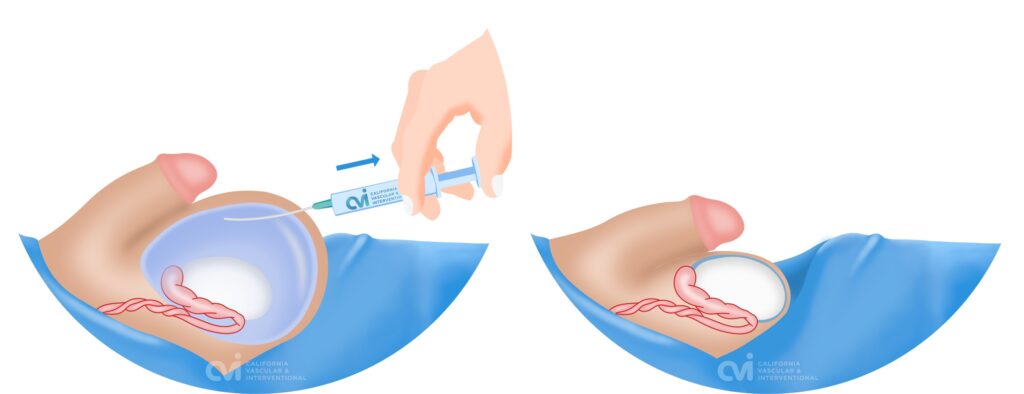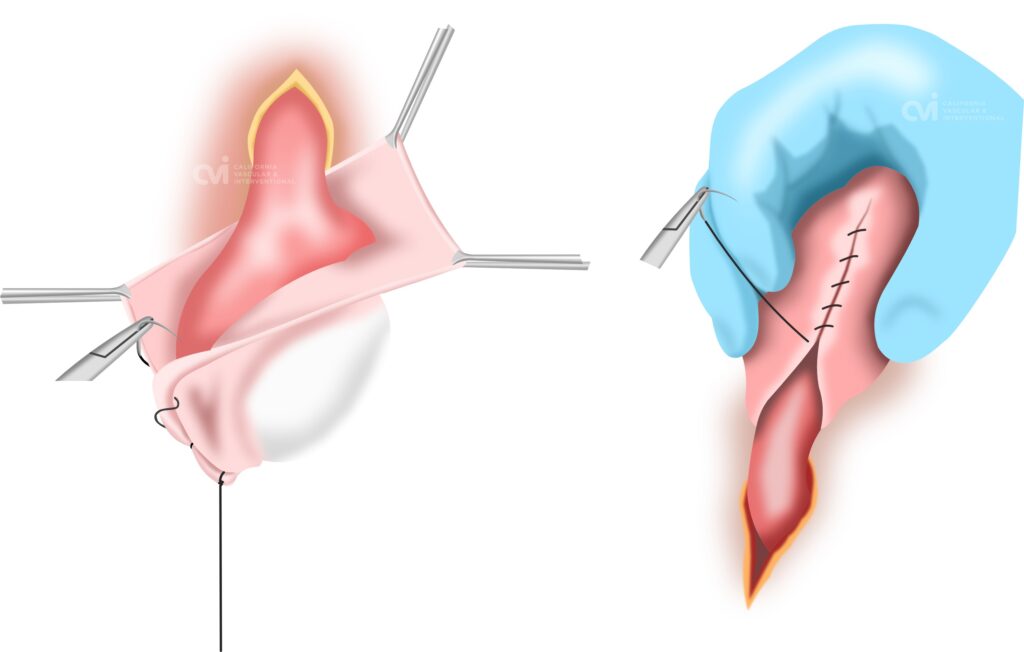A hydrocele is a fluid-filled sac around a testicle that causes swelling in the scrotum. It is a condition in men and boys, which can result from inflammation, injury, surgery or infection. While hydroceles are typically painless, their presence can cause discomfort, embarrassment, and occasionally complications. Two primary treatments for hydroceles are aspiration and sclerotherapy and hydrocelectomy.


Aspiration and Sclerotherapy
Aspiration and sclerotherapy involve two steps: first, the hydrocele fluid is aspirated using a catheter; then, a sclerosing agent is injected into the sac to prevent fluid reaccumulation. The procedure is usually performed under local anesthesia on an outpatient basis, making it less invasive than surgical options.1

Success Rate of Aspiration and Sclerotherapy
Studies indicate that aspiration alone often results in recurrence of the hydrocele. However, when combined with sclerotherapy, the recurrence rates drop significantly. Success rates for aspiration and sclerotherapy can range from 70% to 90%, depending on the sclerosing agent used and the technique applied.2
Benefits of Hydrocele Sclerotherapy
The primary advantage of aspiration and sclerotherapy is its minimally invasive nature. The procedure is quick, often completed in less than an hour, and patients can usually return home the same day. The recovery period is short, and most patients experience minimal discomfort post-procedure. Additionally, it avoids the risks associated with general anesthesia and surgical intervention.3
Risks and Complications of Hydrocele Treatment
Despite its benefits, aspiration and sclerotherapy are not without risks. Potential complications include infection, hematoma, and pain at the aspiration site. Additionally, there is a risk of hydrocele recurrence, which might necessitate repeat procedures or alternative treatments.4
Hydrocelectomy
Hydrocelectomy is a surgical procedure involving the removal of the hydrocele sac. There are two main types: open hydrocelectomy, where a small incision is made in the scrotum or lower abdomen, and minimally invasive (laparoscopic) hydrocelectomy. The procedure is typically performed under general or spinal anesthesia.5
Success Rate of Hydrocelectomy
Hydrocelectomy is generally considered the definitive treatment for hydroceles, with success rates exceeding 95%. The likelihood of recurrence is very low compared to other treatment methods.6
Benefits of Hydrocelectomy
The main advantage of hydrocelectomy is its high efficacy and low recurrence rates. It provides a long-term solution for hydroceles, reducing the need for repeat interventions. Additionally, the procedure can address underlying conditions if they are contributing to the hydrocele.7
Risks and Complications of Hydrocelectomy
Hydrocelectomy, being a surgical procedure,
carries inherent risks such as infection, bleeding, and adverse reactions to
anesthesia. Postoperative pain and swelling are common, and recovery can take
several weeks. There is also a small risk of complications like damage to
surrounding structures, including the testicle or spermatic cord, which could
impact fertility.8

Hydrocelectomy versus Sclerotherapy for a Hydrocele
Minimally Invasive vs. Definitive Treatment
Aspiration and sclerotherapy offer a less invasive option with a shorter recovery period. This can be particularly appealing for patients who are not good candidates for surgery due to underlying health conditions or those who prefer a quicker, less invasive procedure. However, the risk of recurrence and the need for potential repeat treatments must be weighed against these benefits.9
Hydrocelectomy, on the other hand, provides a more definitive solution with very low recurrence rates. For patients seeking a long-term resolution and willing to undergo surgery, hydrocelectomy may be the preferred choice. It is especially suitable for larger or more complex hydroceles where aspiration and sclerotherapy might not be as effective.10
Patient preference plays a crucial role in choosing between these treatments. Factors such as tolerance for surgery, recovery time, potential risks, and the desire for a permanent solution should be considered. For younger, healthier patients, hydrocelectomy might be suitable but the less invasive and scarless option of sclerotherapy would also be appealing. Older patients or those with significant comorbidities might benefit more from the less invasive aspiration and sclerotherapy due to the fast recovery and non-surgical approach.11
Hydrocele Best Treatment Option
Both aspiration and sclerotherapy and hydrocelectomy have their merits and are viable options for treating hydroceles. Aspiration and sclerotherapy offer a minimally invasive alternative with a shorter recovery period but come with a higher risk of recurrence. Hydrocelectomy, although more invasive, provides a long-term solution with low recurrence rates.
Our doctor has his own ultrasound guided technique and many years of experience that has allowed many patients to achieve successful outcomes. Contact us today to setup an appointment with our doctor to review your medical records and expected outcomes for your particular hydrocele.
Request an Appointment
Please note that although we strive to protect and secure our online communications, and use the security measures detailed in our Privacy Policy to protect your information, no data transmitted over the Internet can be guaranteed to be completely secure and no security measures are perfect or impenetrable. If you would like to transmit sensitive information to us, please contact us, without including the sensitive information, to arrange a more secure means of communication.
Contact Us Today
We are Here to Help
Request an Appointment to meet with our image-guided specialist who will review your imaging and medical records to determine if you are a good candidate and outcomes you can expect.
Appointments can be via an online video telehealth platform or in person at one of the offices in Los Angeles, Orange County or San Diego, depending on the doctor’s availability. Why should you choose us? Read here
- Mehra S, Tavakkolizadeh A, Khaled M, et al. Aspiration and Sclerotherapy for Hydroceles. Urol Clin North Am. 2008;35(1):45-52.
- Skoog SJ, Conlin MJ. Pediatric Hydrocele and Hernia Surgery. Curr Opin Urol. 2007;17(5):344-348.
- Patel H, Choudhry M, Shah S. Aspiration and Sclerotherapy for Hydroceles. J Urol. 2010;184(4):1584-1589.
- Olapade-Olaopa EO, Salako AA, Adewole IF. Hydrocelectomy for hydrocele: A review of 50 cases. Afr J Med Med Sci. 1998;27(3-4):181-184.
- Shields DM, Salazar D, Simon RA. Hydrocelectomy Techniques. Curr Opin Urol. 2006;16(6):402-406.
- Weiss AJ, Fogelson B, Skoog SJ. Pediatric Hydrocelectomy: Complications and Outcomes. J Pediatr Surg. 2006;41(12):2041-2044.
- Sarkar D, Banerjee S, Mukherjee P. Comparative Study between Sclerotherapy and Surgical Treatment in Hydrocele. J Indian Med Assoc. 2001;99(9):491-493.
- Mishra A, Chandran A, Mishra SK. Comparison of Outcome of Aspiration and Sclerotherapy Versus Hydrocelectomy in the Management of Hydrocele. Indian J Surg. 2016;78(1):19-21.
- Sabiston Textbook of Surgery: The Biological Basis of Modern Surgical Practice. 20th ed. Elsevier; 2017.
- Russinovich NA, Armitage TG, Gomez J. Surgical Management of Hydroceles. Urology. 1992;39(3):234-238.
- El-Gamal OM, El-Barky EM. Sclerotherapy Versus Surgery for Hydrocele: A Prospective Randomized Study. Int J Urol. 2005;12(8):764-768
The above information explains what is involved and the possible risks. It is not meant to be a substitute for informed discussion between you and your doctor but can act as a starting point for such a discussion.



